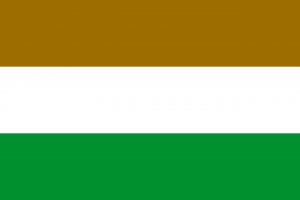Language/Xhosa/Grammar/Plurals
Hi Xhosa learners! 😊
In this lesson, we will focus on plurals in the Xhosa language. We will dive into the different ways you can form plurals and the rules governing plural formation. By the end of this lesson, you will be well-equipped to form and use plurals in Xhosa with ease. Remember to practice what you learn by speaking with native speakers on Polyglot Club. Find native speakers and ask them any questions!
Plural Formation[edit | edit source]
To form a plural in Xhosa, you have a few different options. Some of the most common ones include:
1. Reduplication[edit | edit source]
One of the easiest ways to form a plural in Xhosa is through reduplication. What this means is that you repeat the first syllable of the word, or the entire word, to make it plural. For example:
| Xhosa | Pronunciation | English |
|---|---|---|
| umntu | [ˈumntʼu] | person(s) |
| abantu | [aˈbantʼu] | people |
| intombi | [inˈtombi] | girl(s) |
| ityala | [iˈcɑːla] | sickness(es) |
As you can see, the first syllable of each word has been repeated to form the plural. Keep in mind that not all Xhosa words can be reduplicated to form plurals, but it is a good rule of thumb to try this method first.
2. Suffix -bho[edit | edit source]
You can also add the suffix -bho to a word to form the plural. This suffix is often used for words that end in a vowel or a consonant other than -l, -r, or -n. For example:
| Xhosa | Pronunciation | English |
|---|---|---|
| igama | [iˈɡama] | name(s) |
| izibuko | [iˈziːbuːko] | hill(s) |
| umbono | [umˈbono] | idea(s) |
In these examples, the plural form is created by adding -bho to the end of the word.
3. Suffix -mbo[edit | edit source]
Another common suffix for plural formation is -mbo. This suffix is used for words that end in -l, -r, or -n. For example:
| Xhosa | Pronunciation | English |
|---|---|---|
| ikhaya | [ikʼaja] | home(s) |
| izikhuni | [iziˈkʰuni] | spoon(s) |
| amaXhosa | [amaˈkʰosa] | Xhosa people |
Again, in these examples, the plural form is created by adding -mbo to the end of the word.
Irregular Plurals[edit | edit source]
While most plurals in Xhosa can be formed using the methods outlined above, there are a few plurals that are irregular and need to be memorized. Here are some examples:
| Xhosa | Pronunciation | English |
|---|---|---|
| ubulumko | [ubuˈlumkʼo] | wisdom |
| imithombo | [imiˈtʰombo] | bone(s) |
| izithombe | [iziˈtʰombe] | picture(s) |
In these examples, the plurals do not follow the standard plural formation rules, so it is important to memorize them individually.
Dialogue[edit | edit source]
To help you see plurals in context, here's a dialogue:
- Person 1: Uya libona iintombi? ([Have] you [ever] seen [some] girls?)
- Person 2: Ewe, ndiya zibona kwaKhumalo. ([Yes, I] have seen [them] at Khumalo's [place].)
- Person 1: Uya gcina iinkomo? ([Are you] going to herd [some] cattle?)
- Person 2: Hayi, andibhalele bala. ([No, I] didn't write [down the number].)
Conclusion[edit | edit source]
That's it for our Xhosa grammar lesson on plurals! Remember to practice what you've learned and don't be afraid to make mistakes. To improve your Xhosa Grammar, you can also use the Polyglot Club website. Find native speakers and ask them any questions!
➡ If you have any questions, please ask them in the comments section below.
➡ Feel free to edit this wiki page if you think it can be improved. 😎
Sources[edit | edit source]
- Xhosa Sentence for Beginners | Grammar Lesson 3
- Xhosa Plural | LEARN101.ORG
- Xhosa Definition & Meaning - Merriam-Webster
Well done on mastering this lesson! Don't miss these related pages to expand your knowledge: Questions, Conditional Mood.
Other Lessons[edit | edit source]
- Conditional Mood
- How to Use Have
- Future Tense
- Questions
- Negation
- Give your Opinion
- Pronouns
- Adjectives

